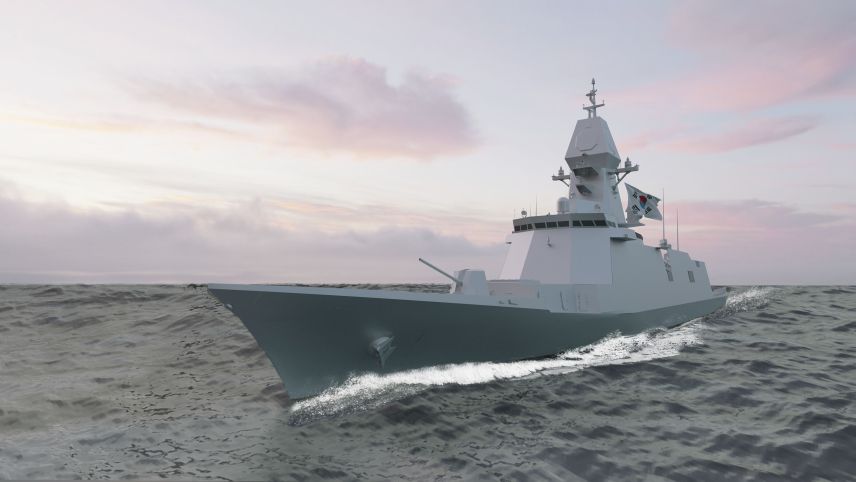
Computer-generated imagery of the FFX-III frigate. (Hyundai Heavy Industries)
South Korea will incorporate a Hanwha Systems-developed, medium-range multifunction radar (MFR) system on the new type of frigates referred to locally as the FFX-III class, an industry source has confirmed with Jane’s .
The class, which is also known as the Ulsan Batch III in official Defense Acquisition Program Administration (DAPA) documents, will be the first warships to feature the Gallium Nitride-based sensor. The active electronically scanned array (AESA) radar will form the apex of the frigate’s integrated mast system.
The MFR was unveiled by Hanwha Systems in October 2019 at the Busan International Maritime Defence Industry Exhibition. It is South Korea’s first fully digital indigenously developed AESA radar, the source claims.
Besides detecting, tracking, and classifying aerial, and surface targets the MFR will also provide guidance to naval gunfire, and anti-air and anti-surface missile systems. The radar can also be configured for limited electronic warfare roles against hostile warships and aircraft.
However, no further technical details of the system were provided.
The Republic of Korea Navy (RoKN) will receive six 3,500-tonne frigates under the FFX-III programme. The warship will have an overall length of 129 m and a width of 15 m. It will feature a hybrid electric and gas propulsion system, and can attain a maximum speed of 30 kt.
The vessel can rely on the electric propulsion systems during anti-submarine operations to minimise its acoustic signatures, and turn to gas turbine propulsion when it needs to operate at high speeds, said HHI in a March 2020 statement.
The programme’s first-of-class is scheduled to be delivered by HHI in 2024.
Looking to read the full article?
Gain unlimited access to Janes news and more...